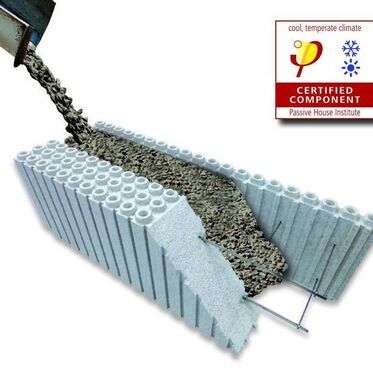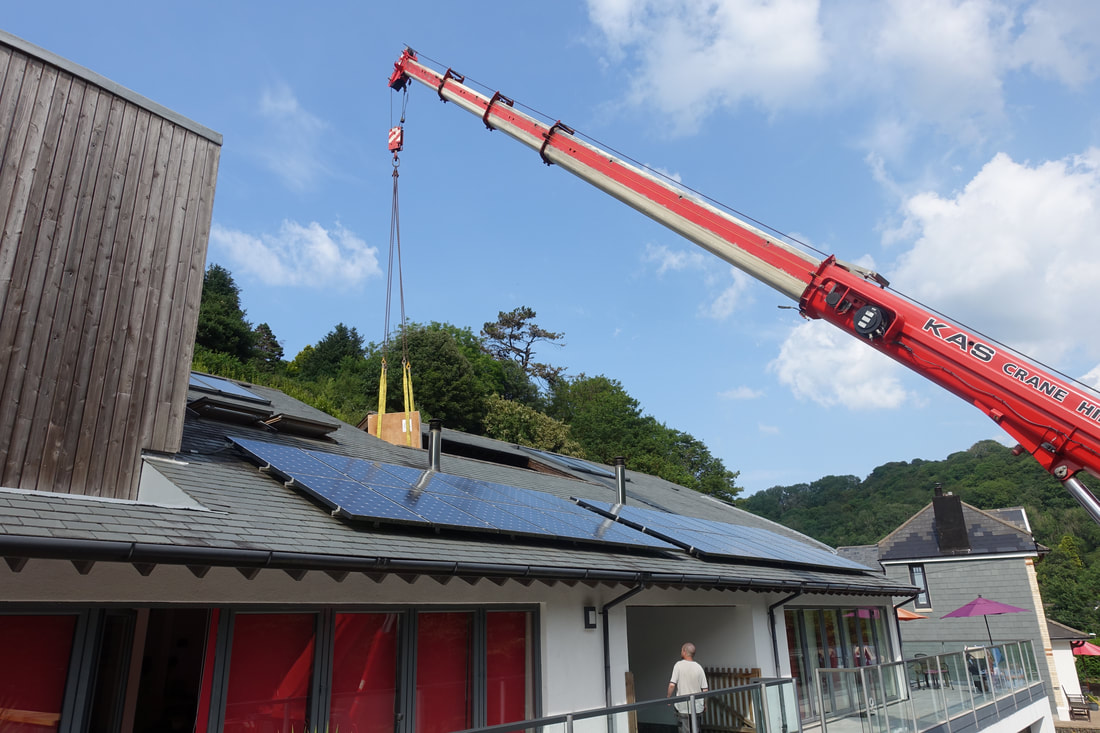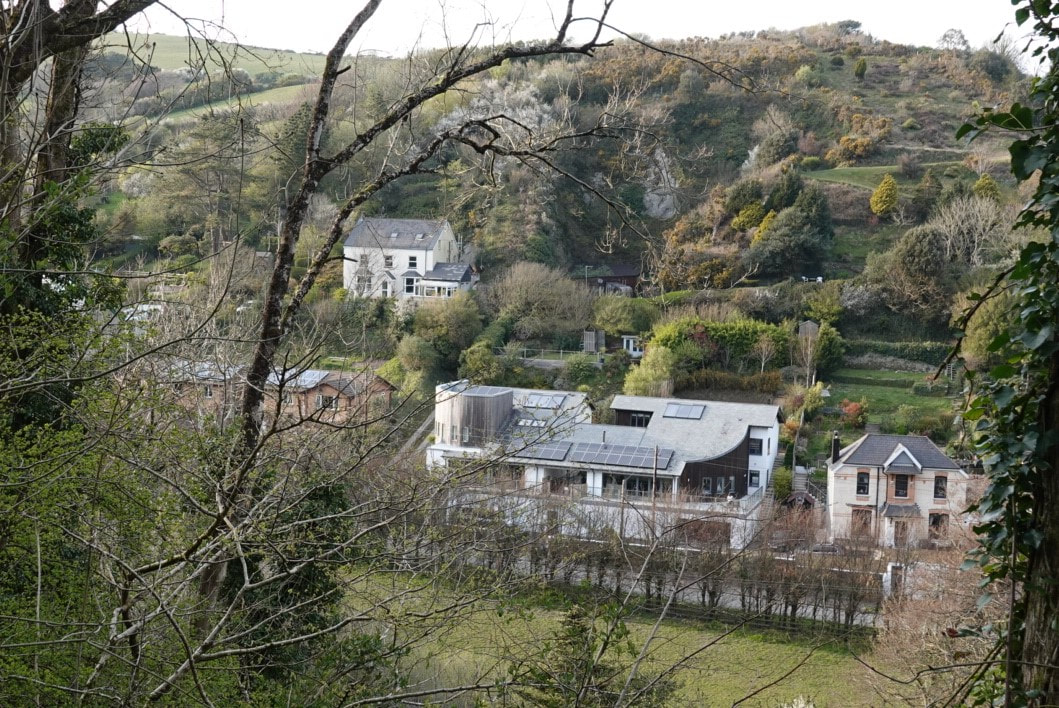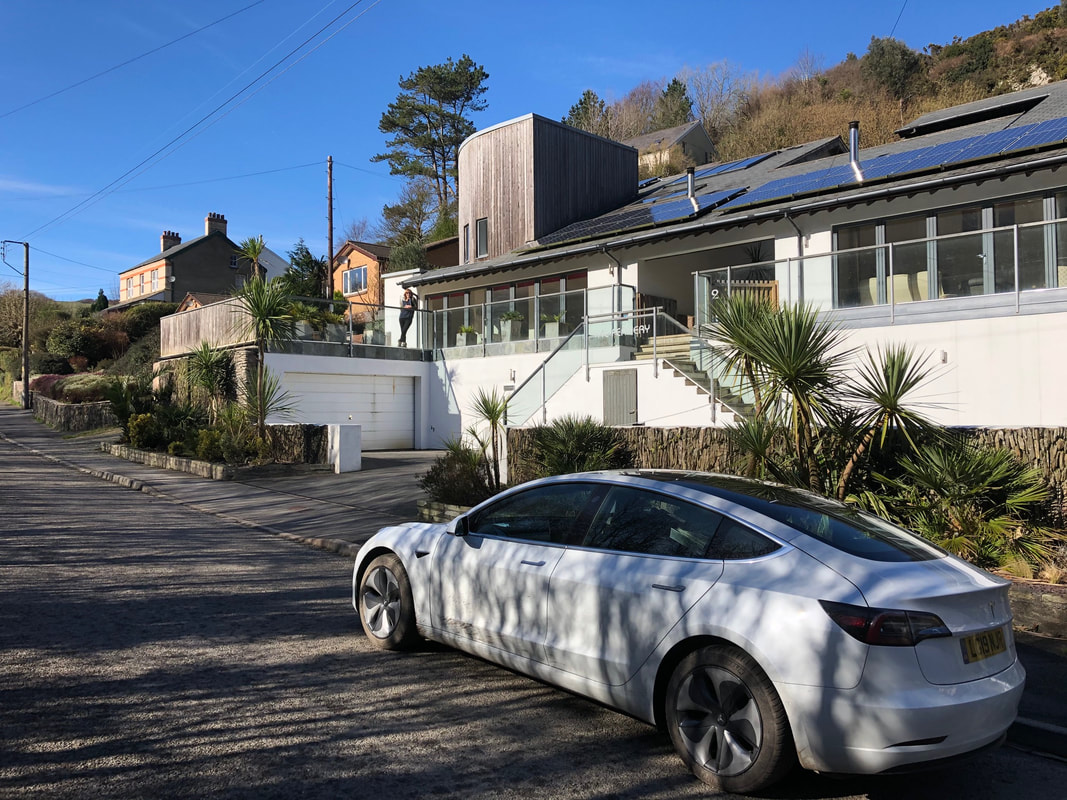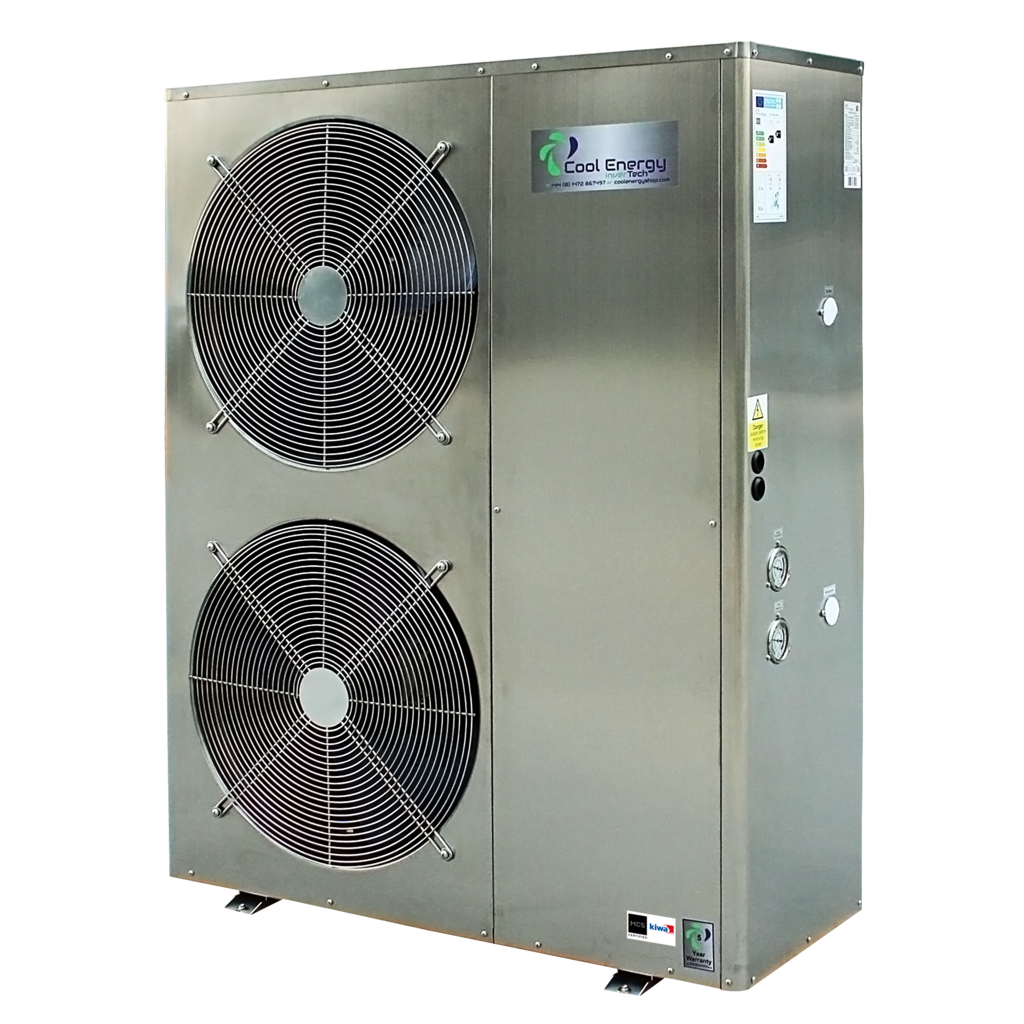The 'ECO' HouseFrom the outset the Fernery was designed to be an eco home and it is locally known as 'the Eco House'. You may be surprised to find out that the walls are made of polystyrene lego like bricks with a healthy dollop of cement poured between them. On the inside plaster board panels have been fixed on battens - like many other houses - but on the outside there is just a thin coat of render on top of the polystyrene. If you knock on the outside wall - not too hard please - you will be surprised by the noise.
The roof and floors are also highly insulated meaning that any heat generated finds it hard to escape. In turn this means that not much heat is needed to warm the house up - the upstairs radiators are rarely turned on even in winter. The entire downstairs of the house has underfloor heating split into 4 zones which is a very efficient way to heat a house. This is why the Fernery has no less than 5 thermosat controls. The other key aspect of the design is the large bank of south facing folding doors - with an overhanging roof. These can act as a big radiator to capture the sun's heat during the day - with the overhang stopping things getting too hot. Thanks to the high level of insulation, underfloor heating, solar heating, Solar PV panels and a new Air Source Heat Pump the Fernery has the highest EPC rating of A. The Fernery is only one of 63, out of 27000, EPC certificates in North Devon to have this rating. As you can see the fitting of the ASHP was quite dramatic! |
Solar HeatingThe Fernery has a set of solar heating panels on the roof which are used to heat up water which is then stored in our pressurised internal tank. On a hot day this means a lot of hot water and no need for central heating/immersion heaters.
|
Solar ElectricityThe Fernery has an array of 16 solar monocyrstalline (most efficient) PV panels generating 220 Watts each or 3.8kW in total. Since they were installed they have generated over 28000 kWh - saving approximately 5000kg of CO2 emissions. We have just fitted a Zappi car charger - which can divert unused solar power to charge up EVs like the Tesla shown above
|
Rain water harvestingThe Fernery has a huge tank in the basement to capture rainwater which is then used to flush the toilets and feed the two outside taps.
When the hot tub water is replaced it is directed into the rainwater harvesting system. The hot tub is however a big blot on our eco credentials - it uses an awful lot of water and power so we also plan to replace it with a log fired model asap. |
Air Source Heat Pump
We have just fttted a Cool Energy inverTech Air Source Heat Pump CE-iVT18 8.5kW-18.5kW weighing 124Kg on our outside walls - which are made of polystyrene (and luckily a little cement as well). This is now the primary way that the house and the hot water is heated - assisted by the solar water heating panels on sunny days.

